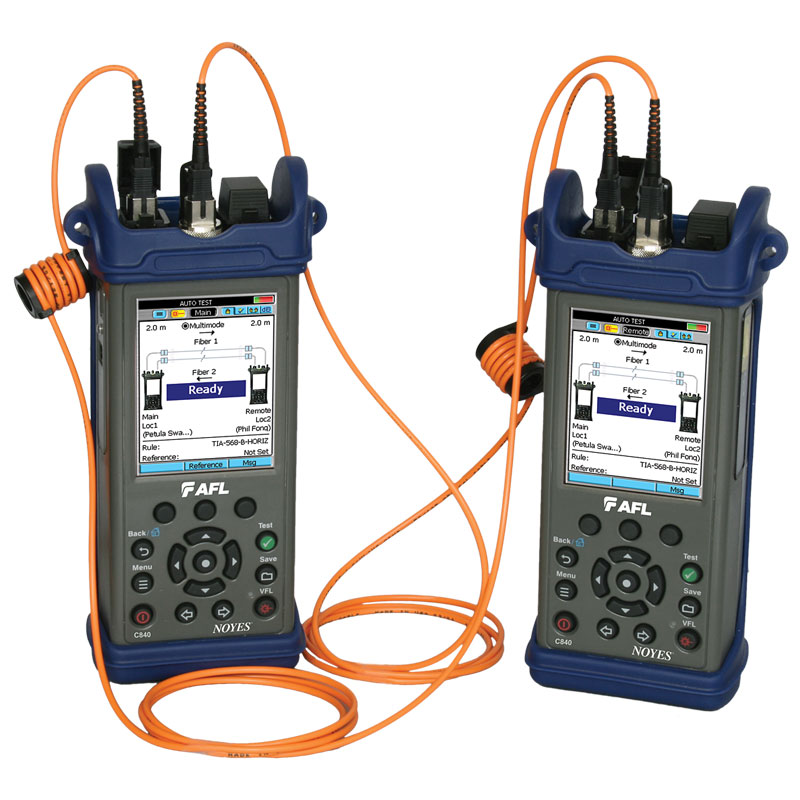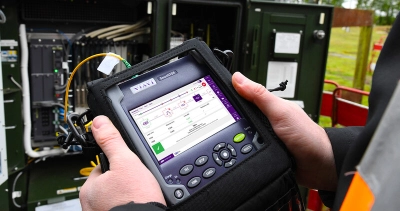A high-precision optical fibre diameter analyser ensures fibre manufacturing.
Discover the Relevance of Optical Fiber Screening in Modern Telecommunications
In the realm of modern telecommunications, the significance of optical fibre testing can not be overemphasized, as it serves as the foundation for making certain network reliability and efficiency. What are the specific benefits that normal screening offers, and exactly how might it shape the future landscape of telecoms?

Recognizing Optical Fibre Screening
Optical fiber screening is a critical procedure in telecommunications that guarantees the honesty and efficiency of fiber optic networks. This testing includes a variety of treatments designed to examine the physical and functional qualities of optical fibres - optical fibre diameter analyser. Secret criteria assessed include optical power loss, data transfer ability, and fault place, which are essential for keeping high-grade interaction web links
The testing process commonly involves making use of specific tools such as Optical Time-Domain Reflectometers (OTDR) and Optical Power Meters. OTDRs are utilized to determine and define mistakes, entwines, and connectors within the fibre, while power meters determine the transmitted light signal toughness to identify effectiveness.
In addition, testing is performed at different phases, including throughout setup, upkeep, and troubleshooting, to guarantee that the network meets market requirements and operational needs. Conformity with criteria established by companies like the International Telecommunication Union (ITU) and the Telecommunications Market Organization (TIA) is vital.
Benefits of Normal Examining
Normal testing of optical fibres yields countless advantages that significantly improve network reliability and performance. One of the primary advantages is the very early detection of possible problems, such as breaks or deterioration in the fibre, which can result in pricey downtime if left unaddressed (optical fibre diameter analyser). By determining these issues proactively, telecoms companies can lessen solution disruptions and make sure constant connection for their consumers
Furthermore, normal screening aids to maintain the stability of signal quality. As optical fibres age, their performance can be affected by aspects such as environmental problems and physical tension. Routine analyses permit for the monitoring of signal loss and total transmission efficacy, guaranteeing that the network operates at ideal degrees.
One more considerable benefit is conformity with market requirements. Routine screening supports adherence to regulatory needs, thus reducing legal and financial dangers connected with non-compliance. It boosts the general life-span of the fibre facilities by promoting prompt maintenance and fixings.

Usual Examining Methods
Checking optical fibers uses various techniques to make certain the stability and efficiency of telecommunications networks. Among one of the most common techniques is Optical Time Domain Name Reflectometry (OTDR), which analyzes the entire size of the fiber by sending out a pulse of light and gauging the representations triggered by blemishes or breaks. This approach supplies detailed information regarding the place and intensity of mistakes.
An additional widespread method is using Optical Power Meters, which determine the amount of light transferred with the fibre. This strategy helps determine the loss of signal strength, making sure that it satisfies market requirements. Additionally, Visual Fault Locators (VFL) are employed to identify breaks or severe bends in the fibre by projecting a noticeable laser light into the cable.
Insertion loss screening is additionally crucial, as it quantifies the loss of signal power resulting from links and splices within the network. Additionally, making use of Polarization Mode Dispersion (PMD) testing evaluates the impact of fiber attributes on signal honesty.
Each of these methods plays a crucial role in keeping the efficiency and reliability of optical fiber networks, inevitably adding to seamless telecoms procedures.
Effect On Network Performance
The honesty and performance of optical fiber networks straight influence total network performance. In contemporary telecoms, the effectiveness of data transmission depends heavily on the quality of the optical fibers utilized. Any deterioration in the fiber's condition-- whether as a result of physical damages, contamination, or excessive flexing-- can result in raised attenuation and signal loss, considerably impacting information integrity and rate.
Routine optical fiber testing is important to identify and fix prospective problems prior to they manifest as network failures or slowdowns. Strategies such as Optical Time Domain Reflectometry (OTDR) and insertion loss screening make it possible for technicians to determine the efficiency of fibre links properly. These tests not only review the physical condition of the fibres yet also make sure conformity with sector requirements, therefore protecting the network's integrity.
Furthermore, a well-maintained optical fibre network adds to reduced operational expenses and enhanced consumer fulfillment, as end-users experience less disturbances and higher data rates. Inevitably, the focus on rigorous optical fibre about his testing methods offers as a cornerstone for sustaining robust telecoms facilities, making certain that click for more provider can satisfy the growing demands for data transfer and connection in today's electronic age.
Future Fads in Examining
As we look in advance, developments in innovation are positioned to reshape optical fibre testing in telecommunications. The increase of automation and artificial knowledge (AI) is anticipated to enhance the effectiveness and precision of testing processes. Automated testing systems can carry out thorough evaluations with very little human intervention, substantially decreasing the capacity for errors and accelerating time-to-deployment.
Furthermore, the integration of maker discovering formulas will certainly make it possible for predictive upkeep, permitting network carriers to predict possible problems before they escalate right into failures. This positive method not only boosts network dependability however also maximizes functional costs.
An additional emerging trend is the growth of portable screening gadgets that provide real-time evaluation - optical fibre diameter analyser. These gadgets will encourage service technicians to carry out on-site diagnostics rapidly, helping with quicker resolutions and boosting solution quality
The development of 5G networks further necessitates the development of testing methodologies. As data transfer demands increase, typical testing strategies might no much longer are adequate. Innovative options such as optical time-domain reflectometry (OTDR) and progressed spectral evaluation will become essential in making sure the stability and performance of high-speed links.

Verdict
In verdict, optical fiber screening is important for Go Here ensuring the integrity and dependability of modern-day telecoms networks. Regular testing techniques not only help identify possible problems such as signal loss and mistakes but likewise add to boosted network efficiency and consumer complete satisfaction. As the need for smooth connection remains to grow, the adoption of sophisticated testing techniques will certainly play an important duty in maintaining top notch network criteria and sustaining the evolving landscape of telecommunications.